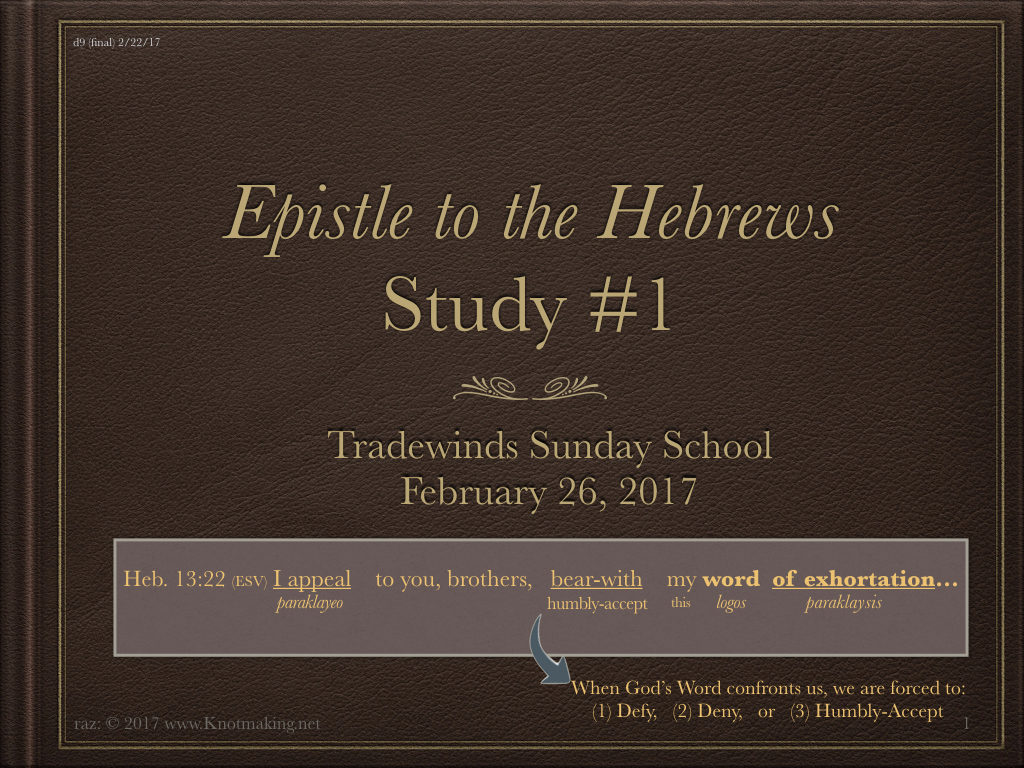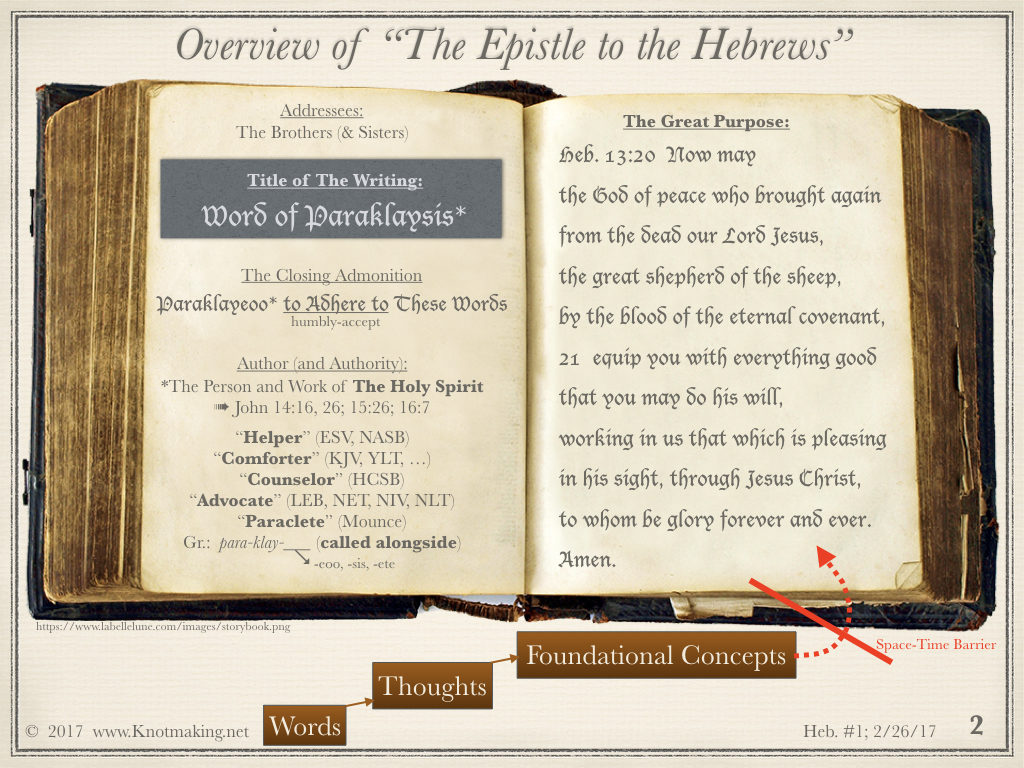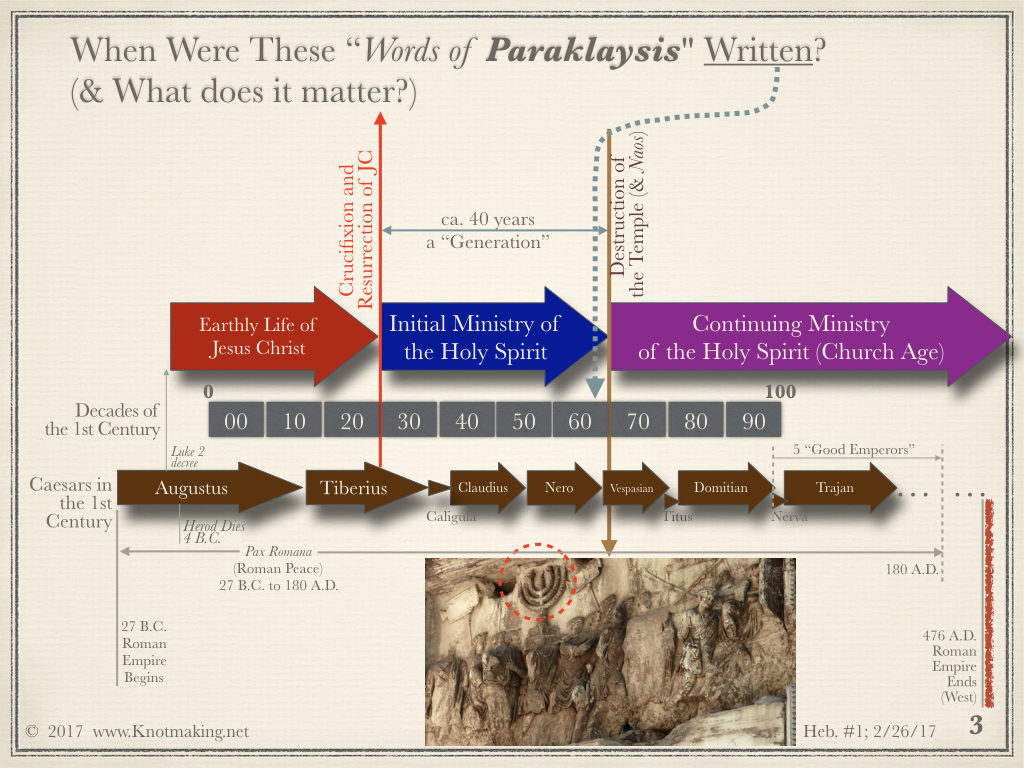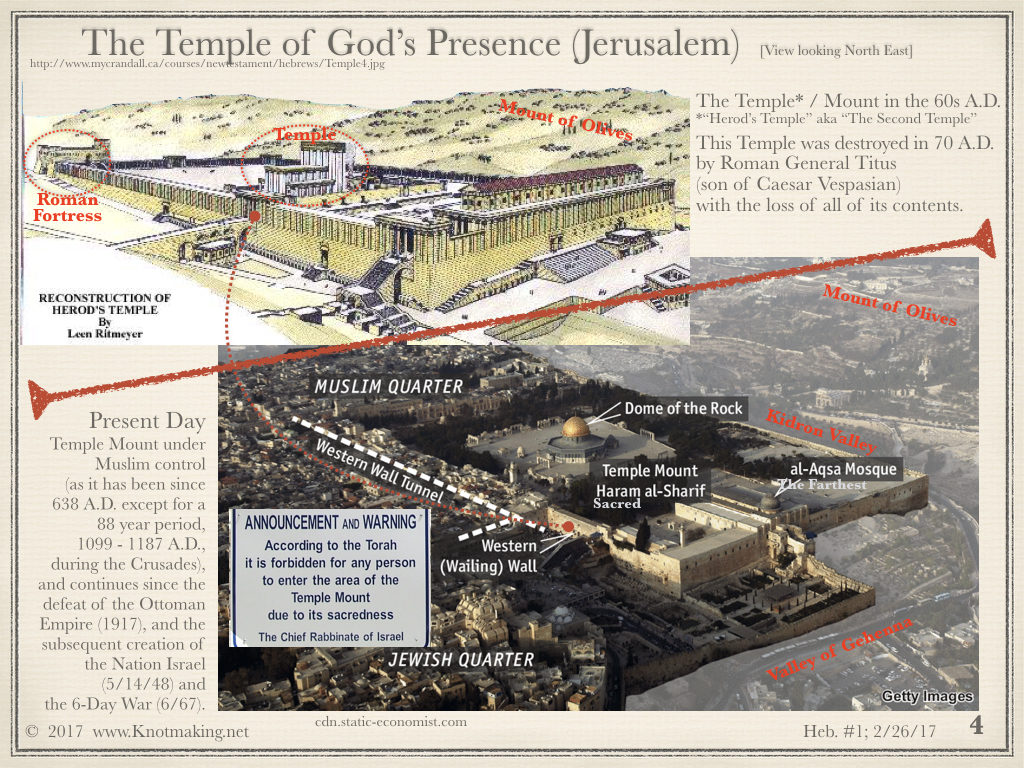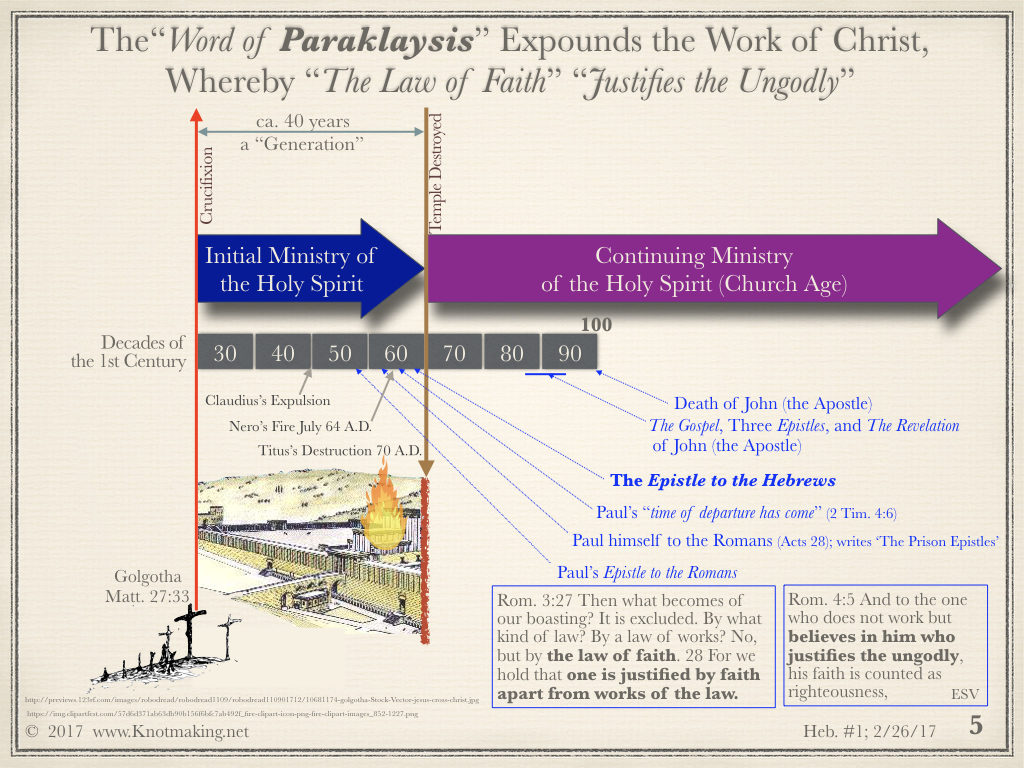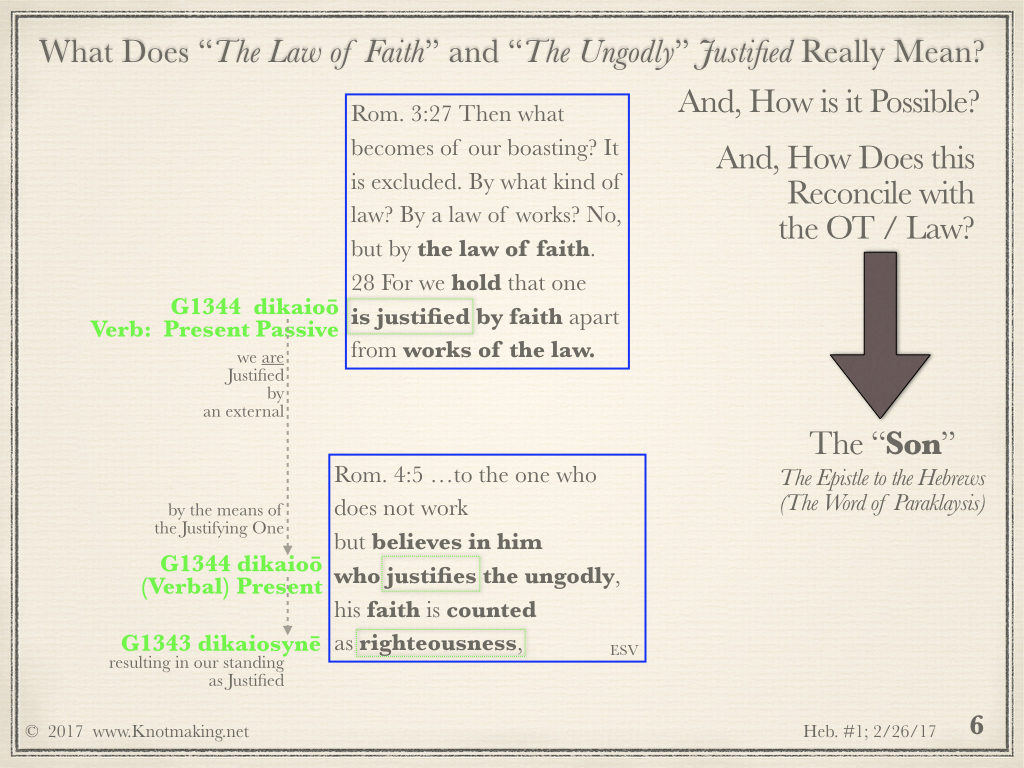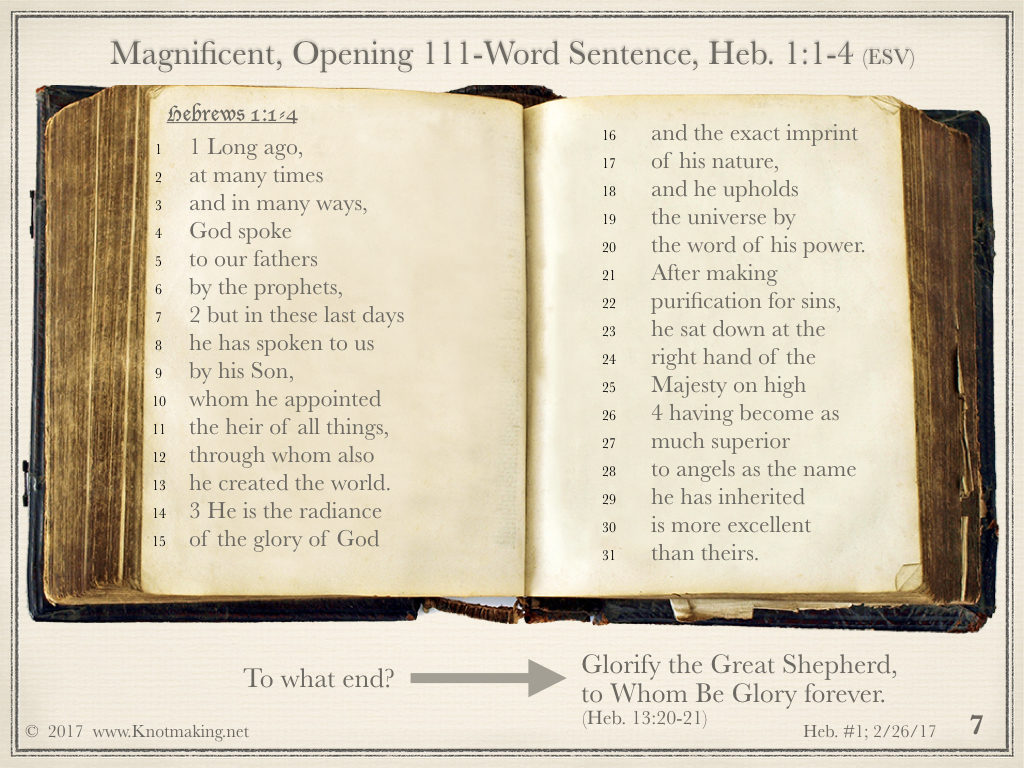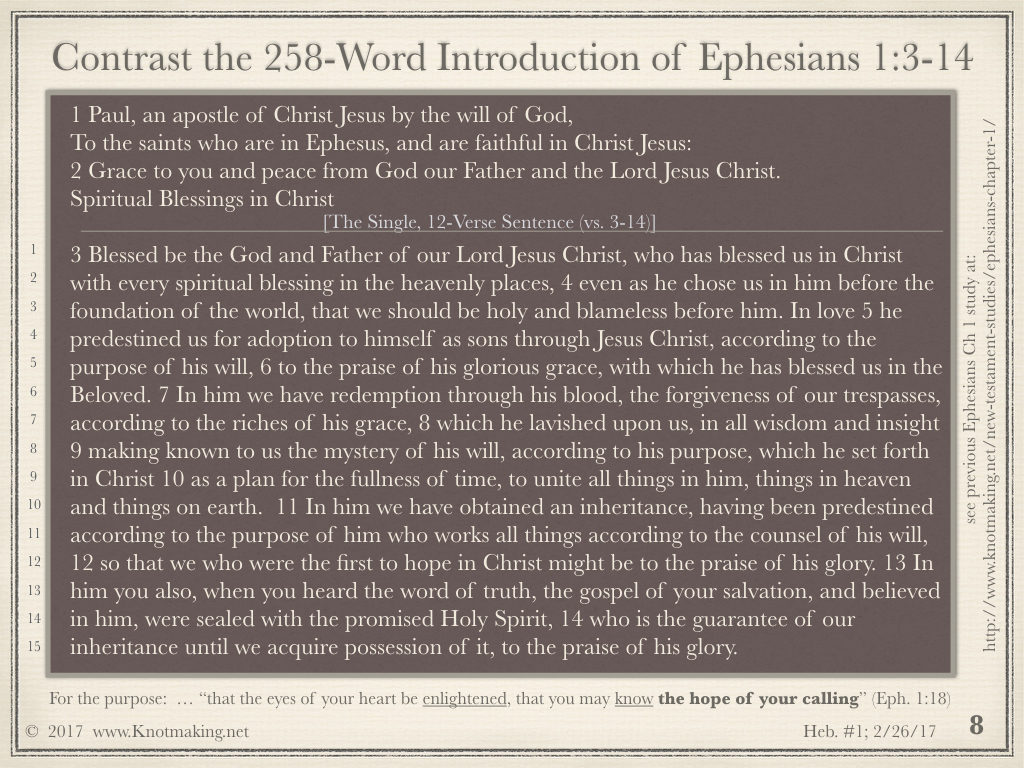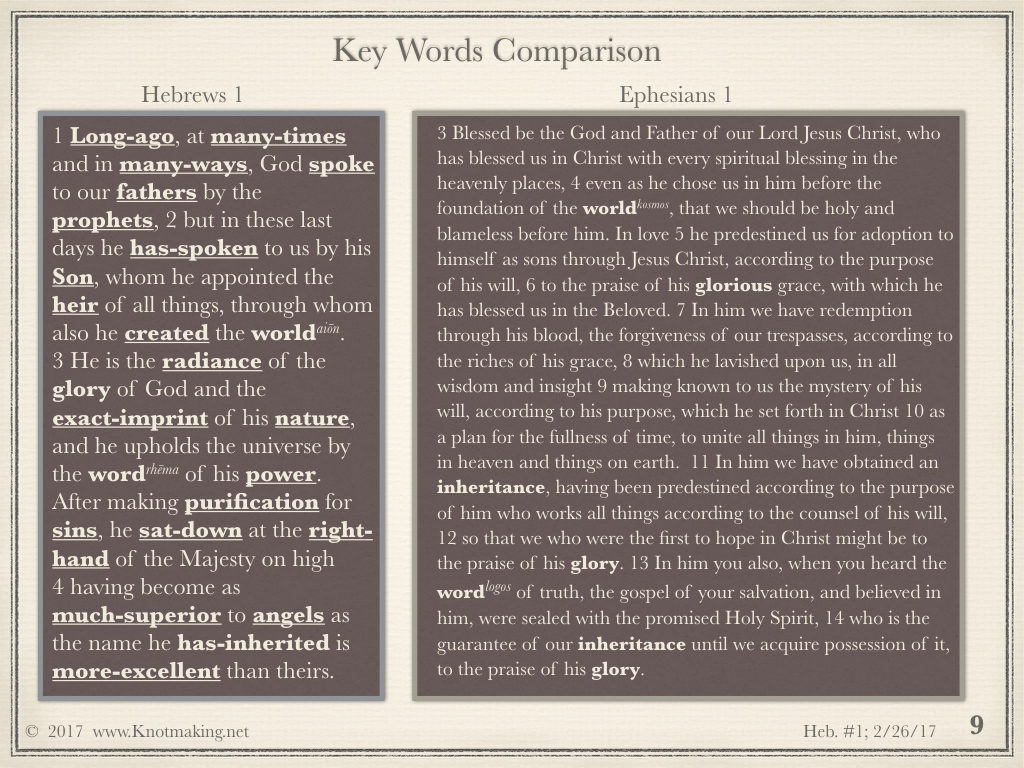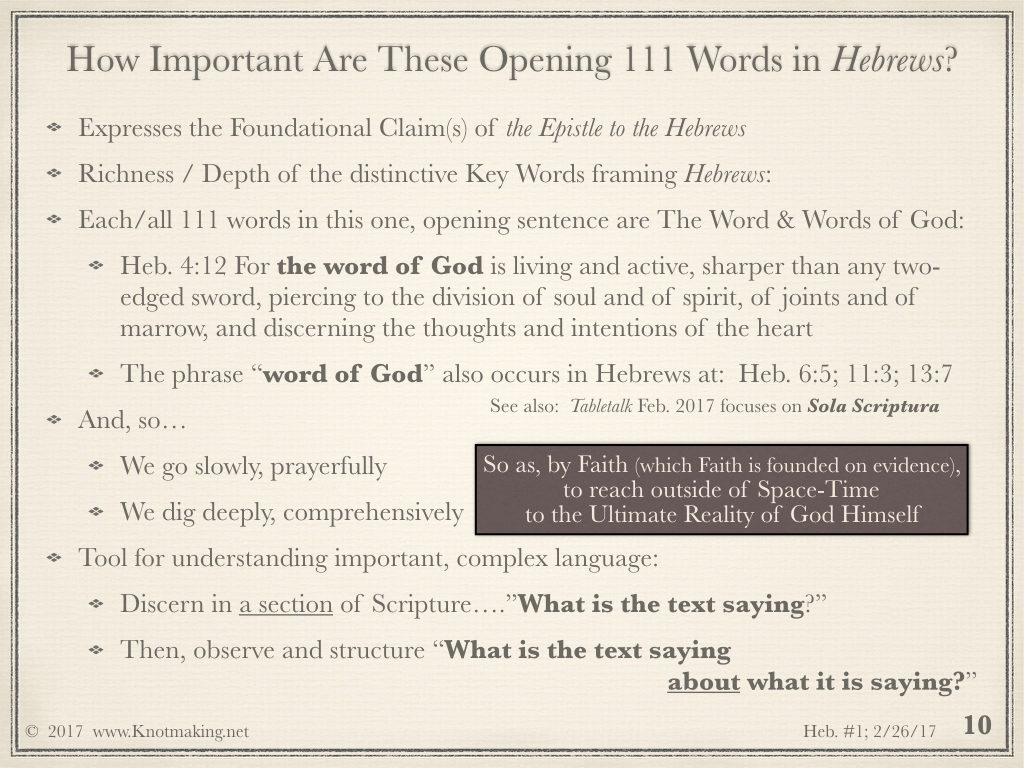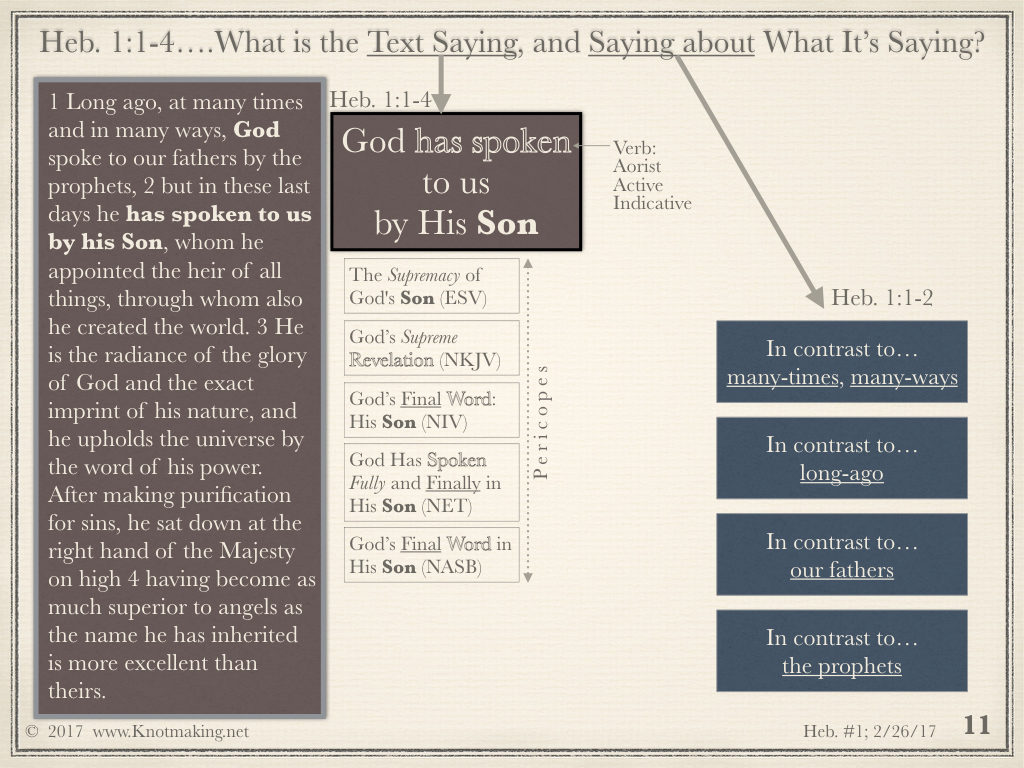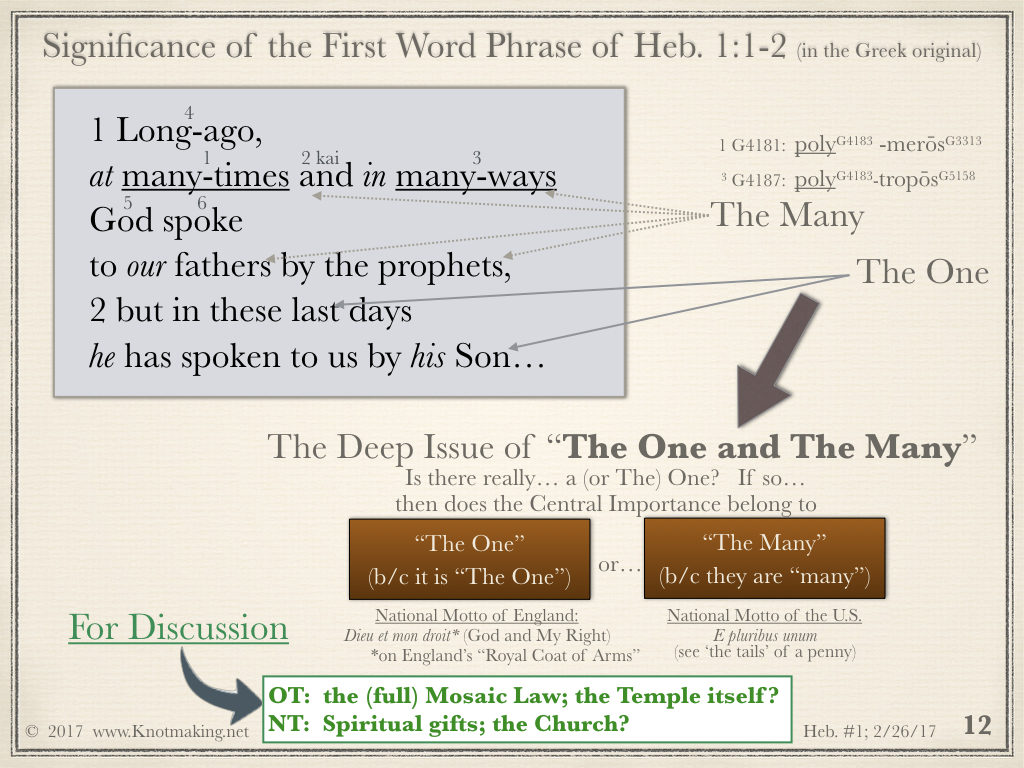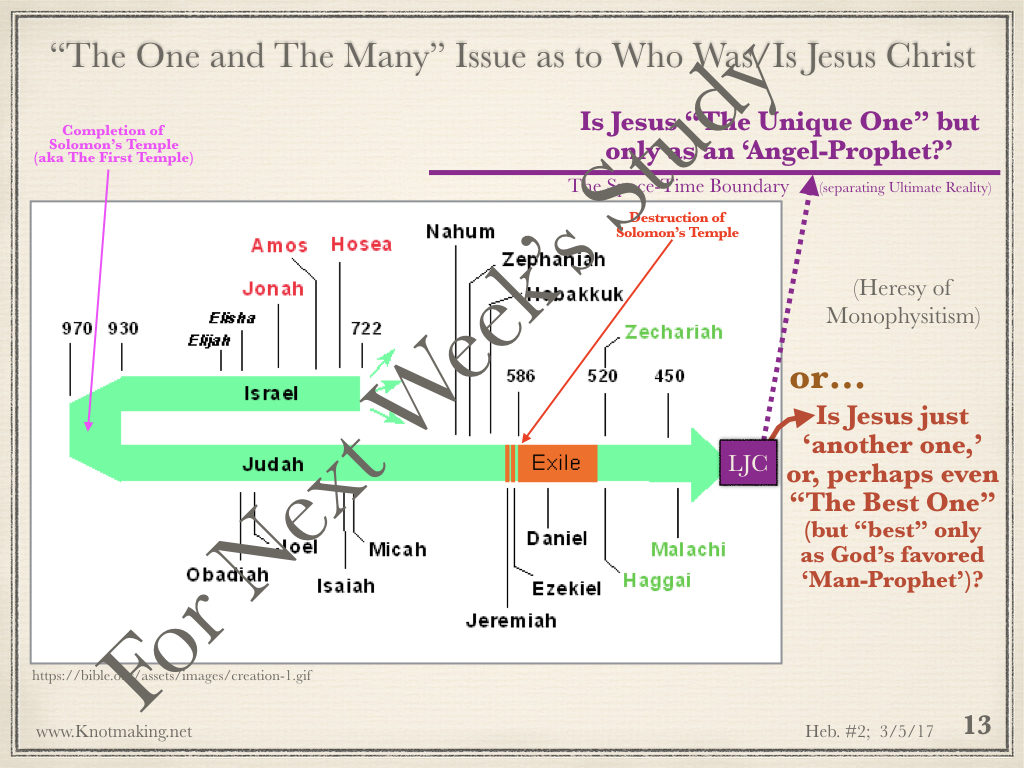Our scope for this Study #1 is:
- Introduction to the NT Book known as “The Epistle to the Hebrews.” There is some irony in the use of this name as the word “Hebrews” (or “Hebrew” or “Jew” or “Jews”) does not occur in the epistle itself. Further, the book is structured quite differently than the other NT epistles in that it does not introduce itself as an “Epistle,” namely a letter from an author to addressees. Subsequent to its writing in the late 60’s A.D., and subsequent to the 1st Century, someone affixed that title to the epistle, and it has stuck. The possible harm associated with the title’s reference to “Hebrews” is that we here in the 21st Century might believe this wonderful book does not apply to us, neither Jews nor Gentiles, and so is not deserving of careful attention. As we will see in the charts below, it is written to the brothers and sisters of God’s calling, which includes us all.
- Another unusual factor about this epistle is the nearly 2,000 year old debate as to who was the human author of Hebrews. Going back at least 17 centuries, there has been debate in the church as to the writer, many thinking the Apostle Paul, but more than a handful of alternative names have been proposed. The epistle does not itself say who was its penman, but does say, as we will see below, that the Holy Spirit, who is ultimately “The Author” of the entire NT is the author. That should be all that matters to us. God in His Sovereign Wisdom has left it ambiguous who the human was who He used to pen the writing. This uncertainty has had the beneficial effect that many have studied the book in detail for the purpose of discerning human authorship, which has led to a greater appreciation of the wonderful truths and teachings of the epistle.
- The charts below first provide the important context of Hebrews, namely its writing was almost certainly just prior to the utter destruction of The Temple (in 70 A.D.) in Jerusalem, the center of worship under the full Mosaic Law, and thus extinguishing, to this very day, any possibility of faithful fulfillment of the full Mosaic Law by anyone. Hebrews was written as the final presentation of the claims of Christ’s Deity and Work to the professing Jews who still followed the Mosaic Law and to all of us who need to reconcile the expansive and vital OT teachings with the NT claims of Jesus Christ and His work of the Cross.
- The focus of Study #1 is on the very first verse as there a cornerstone idea of the entire epistle is presented.
The study charts for Heb. Study #1 are given below:
A closing verse of Hebrews, shown in the above chart (Heb. 13:22) gives us the basis of the epistle’s claim that its author is the Holy Spirit (The Paraclete, Who has been called aside us Paraklaysis, to be our Teacher, Comforter, Encourager in this NT age). See the chart below for the context of such reference to The Holy Spirit.
Also, by looking to the end of the epistle, we can begin our study with the goal firmly established, namely: to glorify the Person and Work of Jesus Christ.
The image in the above chart is a photograph I was privileged to take of the interior of the Arch of Titus, which Arch is still standing in Rome. It dates to ca. 80 A.D. and memorializes the Roman triumphant march into Rome of the booty taken from the Temple in Jerusalem upon its destruction. In the red dotted circle is shown the famous seven-candle lamp atop of the Ark of the Covenant.
The destruction of the Temple in 70 A.D. laid waste the special place where God Himself dwelt in the Holy of Hollies from the time of Solomon about nine centuries earlier (interrupted for a generation as a result of the Babylonian captivity in 586 B.C., but restored by Cyrus the Persian King).
The chart below illustrates the sequence of NT events (in their estimated order–none of the dates are absolutely certain). The certain dates are shown in reference to events in the Roman empire (Claudius’s expulsion of the Jews from Rome, 49/50 A.D., the devastating fire in Rome during the reign of Nero and perhaps caused by Nero himself, 64 A.D., and the destruction of the Temple in Jerusalem in 70 A.D.
The opening words of Hebrews are a long, single sentence. In the versification of the Bible, this single sentence is spread across four verses, Heb. 1:1-4. In the ESV translation, the translators have broken up the sentence in two English sentences to aid reading (at the loss of a certain coherence).
In the chart above, I have put in bold font certain words from the opening sentence in Hebrews that are particularly important in our study of the epistle. Those bold font words that are underlined no not occur in an equally wonderful, single-sentence passage from Ephesians 1 shown in the box on the right above. The few words in Hebrews that are bold and not underlined do have some correspondence with the passage in Ephesians. However, the reference to “inheritance” is the opposite application in Ephesians where it references our inheritance to its use in Hebrews where it speaks of Christ’s inheritance. Similarly the word “world” occurs in both contexts in the English translation but the underlying Greek word is different (kosmos in Ephesians, aion in Hebrews). Also the word “word” occurs in both but again the underlying Greek word is different. So the only word that overlaps both texts is “glory.” The remarkable point to be made here is that these two important epistles are highly complementary, but are establishing different (both important) God-based foundational truths.
The Biblical claims of authority are central to our study, and any study, of Hebrews or any portion of the Bible. If such claims are false, or subject to error–so I am left to pick and choose which parts are true, or relevant, to and for me–then I am left with my personal ‘sovereignty’ deciding what’s true and right, which is tantamount to making a claim that I am like god. The February issue of Tabletalk magazine, a publication of Ligonier Ministries (www.Ligonier.org) provides an excellent, simple to understand summary of the Bible’s claim, and the basis of our belief in such claim, of the complete reliability and relevance of Scripture, summarized by a Latin term dating from the time of the Reformation: Sola Scriptura, meaning that the Bible and the Bible alone is the final authority of truth about God. The teaching of humans, however well-intentioned, or of “the church,” supported by however many millions, does not, cannot, stand in authority over the Word of God.
Hebrews Study #2 is here:
